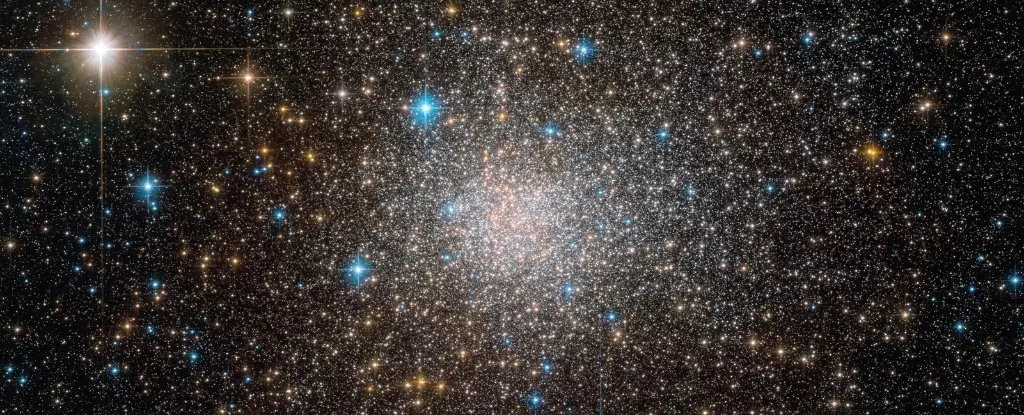As scientists embarked on unraveling a century-old cosmic mystery, they stumbled upon an unexpected cosmic laboratory in Terzan 5, a dense star cluster hurtling through our galaxy at a rapid pace. This discovery has opened up a plethora of opportunities to delve into the enigmatic world of cosmic rays.
The existence of cosmic rays came as a surprise to scientists, as conventional wisdom at the time dictated that all sources of radiation were confined to Earth. However, in 1912, physicist Victor Hess’s high-altitude balloon experiment revealed elevated radiation levels beyond Earth’s atmosphere, pointing towards a celestial origin for these particles. This groundbreaking discovery paved the way for further research into the complex nature of cosmic rays.
Cosmic rays, comprising atomic nuclei and elementary particles accelerated to near-light speeds, navigate through interstellar space, occasionally penetrating Earth’s atmosphere. Due to their charged nature, cosmic rays alter their trajectory upon encountering magnetic fields, dispersing in random directions akin to a malfunctioning CRT monitor. Despite our understanding of the general distribution of cosmic rays across the sky, key details regarding their rapid directional changes remain elusive.
Terzan 5 emerges as a crucial cosmic laboratory due to its abundance of millisecond pulsars, rapidly rotating and magnetized stars that accelerate cosmic rays to extraordinary speeds. The interaction of these cosmic rays with fluctuating magnetic fields produces telltale gamma rays, shedding light on their intricate journey through space.
In a surprising twist, gamma rays emanating from Terzan 5 do not align with the cluster’s stellar positions but appear to originate from a distant region devoid of any apparent source. This anomalous displacement puzzled researchers until a compelling explanation arose.
Terzan 5’s trajectory through the galaxy, characterized by rapid motion and magnetic field cloaking akin to a comet’s tail, plays a pivotal role in unraveling the mystery. Cosmic rays, initially confined to the tail’s trajectory, gradually realign towards Earth due to magnetic fluctuations, eventually producing observable gamma rays after a 30-year travel span.
Through Terzan 5’s cosmic laboratory, scientists have achieved a groundbreaking milestone by measuring the timescale for magnetic fluctuations to alter cosmic ray trajectories. This newfound insight not only enhances our comprehension of interstellar magnetic fields but also brings us closer to deciphering the cryptic radiation from space postulated by Hess a century ago.
The cosmic laboratory presented by Terzan 5 offers a unique vantage point to delve into the dynamic realm of cosmic rays, sparking newfound revelations and propelling scientific understanding to greater heights.


Leave a Reply